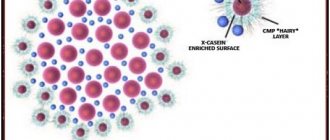Natural sweeteners have become an integral part of the lives of certain groups of the population. Some people remove sugar from their diet on the advice of doctors (diabetics and patients with excess weight problems), others simply try to stick to a healthy diet. Research shows that excessive consumption of sugar itself and products based on it causes improper metabolism in the body, promotes the proliferation of microbes in the oral cavity, and so on.
To protect your health, you should seek the advice of a nutritionist or other qualified professional before switching to any sweetener. After all, according to doctors (a striking example here), sugar substitutes can cause cancer and neurological diseases.
What types of sweet additives are there?
Sweeteners are usually called all compounds that act as an alternative to sugar. But products like honey, molasses or maple syrup, and maltodextrin are not. It must be a pure substance and not a mixture of several components.
Sweet additives can be divided into two large groups:
- Natural. They are found in natural sources, where they are obtained from. Such compounds are well tolerated by the body and do not cause allergies. For the most part, they contain calories and are close to sucrose in terms of sweetness.
- Synthetic. Such substances are absent in the bodies of animals and plants and are obtained artificially. They are not absorbed by the body and have no calorie content or glycemic index. In terms of safety, synthetic ones are always inferior to natural ones.
From a chemical point of view, sweet substances can be of a very different nature: carbohydrates, polyhydric alcohols, glycosides, proteins, etc. They are used in the production of dietary and diabetic food products and are sold in supermarkets as an alternative to refined sugar for tea, coffee, and cooking.
Depending on the intensity of taste, sugar substitutes are:
- Volumetric. They are close in sweetness to beet carbohydrates, so they need to be added in the same amount (volume). There are many natural substances in this category (fructose, sorbitol, xylitol).
- Intense. Their degree of sweetness is 300-500 times higher than sucrose, so their use is economically feasible despite the high cost per 1 kg. This category contains all artificial compounds. Although there are natural proteins that are several thousand times sweeter than sugar, they are not yet widely used.
Often, dietary supplements and food products use a combination of several substances to make their taste more pleasant and more convenient to dose. Interesting! Sweeteners are a group of food additives with indexes E950-969. In the case where an ingredient performs several functions at once, it may also belong to another category.
Natural, Metabolic or Metabolic, True Sweeteners
The list of natural analogs of sugar includes more than 25 compounds, but not all of them are in demand and are sold in the public domain. Here is the ranking of the most popular:
- Fructose. A common carbohydrate found in fruits, especially sweet fruits. The intensity of taste is 1.7 times higher than that of refined sugar, and the calorie content is approximately the same. Due to its high sweetness, it can be included in dishes in smaller quantities, thereby slightly reducing their nutritional value.
- Stevia. It is an herb that can be used when dried to add sweetness to food and as a medicinal plant. The glycoside stevioside is also extracted from it; it is 300 times sweeter. The disadvantage is that it has a not entirely pleasant herbaceous, sometimes bitter, tint.
What is the reason for the popularity of sweeteners?
Even preschoolers know about the dangers of excessive sugar consumption. However, there is a paradox - despite widespread awareness of the negative consequences, its consumption is constantly growing. People like sweets; they lift their spirits and provide a pleasant taste experience. Scientists talk about the addictive effect of sugar, which is similar to drug addiction. In addition to ordinary household use, there is also hidden consumption. Sugar is present in foods that cannot be called sweet. For example, a kilogram of regular sausages contains 90 g. Mass obesity, heart and stomach disorders, tooth decay, a sharp surge in the incidence of diabetes - this is the price to pay for sugar abundance.
Did you know that...?
According to statistics, the average Englishman consumes 238 teaspoons of sugar per week. As a result, a quarter of UK residents are obese. Residents of Foggy Albion spend 5.1 billion euros a year on the treatment of diseases caused by excess weight.
Even partial replacement of sugar with sweeteners significantly reduces the calorie content of the usual diet, lowers blood glucose levels, which helps normalize weight. At the same time, people do not feel taste discomfort. Sugar substitutes completely compensate for the sweetness of products, often unnoticed by the consumer. According to some medical scientists, a 40 percent switch to sweeteners can eliminate the problem of excess weight in most people and halve the likelihood of diabetes.
Sweeteners are in demand by the food industry and are beneficial to use. Most sweeteners are tens or even hundreds of times sweeter than sugar, meaning smaller doses of drugs are required for production. Thanks to this, warehouse space is freed up, less money is spent on transportation, and by reducing the weight of the additive, the yield of the main product increases.
Comparison table of characteristics
To make it easier to navigate and choose additives, here are the properties of sweeteners in table form:
| Name | Calorie content, kcal per 100 g | Glycemic index (GI) | Dietary supplement code |
| Natural | |||
| Fructose | 399 | 20 | has no index |
| Trehalose | 400 | 70 | has no index |
| Stevia | 18 | 0 | E960 |
| Erythritol (erythritol) | 0-20 | 0 | E968 |
| Xylitol | 367 | 12 | E967 |
| Sorbitol | 354 | 9 | E420 |
| Synthetic | |||
| Sucralose | 0 | 0 | E955 |
| Aspartame | 400 | 0 | E951 |
| Saccharin | 359 | 0 | E954 |
| Cyclamate | 0 | 0 | E952 |
| Neotame | 0 | 0 | E961 |
| Acesulfame potassium | 0 | 0 | E950 |
Important!
Some synthetic compounds have a high calorie content per 100 g, but due to the intense taste they need to be used in tiny doses, so 1 serving will have zero energy value.
Raw cane sugar
Raw cane sugar is obtained from the sugar cane plant, which is a plant native to tropical regions of the world such as Southeast Asia. It accounts for about 40–45% of all sugar produced in the United States, but it is not widespread in Russia and the CIS countries ().
It is used to sweeten everything from desserts to hot drinks, and is often preferred over other types of sugar due to its versatility and sweet, slightly fruity taste ().
However, although raw cane sugar is often marketed as a healthy alternative to regular sugar, there is no real difference between the two.
In fact, both are identical in terms of chemical composition and consist of sucrose, a molecule formed by units of simple sugars such as glucose and fructose ().
As with regular sugar, consuming large amounts of raw cane sugar can contribute to weight gain and the development of chronic diseases such as heart disease and diabetes ().
Summary:
Like regular sugar, raw cane sugar is composed of sucrose and can contribute to weight gain and disease if consumed in excess.
The best sweetener: selection criteria
You should immediately understand that there is simply no ideal substitute for refined sugar that meets all the requirements at once. Therefore, in each specific case, certain parameters come first.
Things to consider when choosing a sweetener:
- safety and absence of side effects, possible use for children and during pregnancy;
- purity of taste: how pleasant it is, without any extraneous shades;
- calorie content (not only per 100 g, but also per serving);
- glycemic index;
- solubility in water;
- release form, ease of use;
- resistance to high temperatures;
- price.
You also need to take into account that often dietary supplements are a mixture of several ingredients with different properties. Therefore, when purchasing, always read the ingredients!
Safe sweeteners for weight loss
Since the main requirement for food when losing weight is a minimum energy value to avoid fat deposition, it is worth choosing sweeteners with low calorie content. These are all synthetic substances, as well as pure stevioside.
Syrup
Molasses is the syrup left over from the cane sugar production process. It is sold in large shopping centers and health food stores.
What's the benefit
The sweetener is rich in Everything you need to know about molasses minerals, B vitamins and microelements: iron, phosphorus, calcium, potassium and magnesium. Thanks to this, molasses:
- normalizes blood pressure;
- is a preventative against stroke;
- stabilizes blood sugar levels;
- replenishes the energy reserves of our body;
- has a beneficial effect on the digestive system;
- can be used as a substitute for honey if you are allergic to it.
What to pay attention to
Molasses is eaten and used in making desserts and baked goods. When choosing a product, pay attention to the color - dark molasses is less sweet.
Which sweeteners can be heated?
Any sweet compounds are useful for use in cold dishes and drinks; they all have fairly good solubility. For hot tea and coffee, and for baking, everything is also suitable, with the exception of aspartame. It is not a heat-stable substance, it decomposes already at 30 degrees, and it absolutely cannot be heated.
If you do not abuse fast carbohydrates, then they will only provide benefits and no harm. Therefore, the most correct approach is to reduce the concentration of refined sugar in food. In case of diabetes and obesity, natural or artificial sweeteners will come to the rescue instead of sugar. Each substance has its own advantages and disadvantages.
Harm from sweeteners, possible negative consequences of taking them
- Most natural sweeteners do not match the “pure” sugar taste. Some have a “metallic” taste, others are bitter. It should be noted that the extracts of these substances are completely free from this disadvantage.
- Significant excess of a single dosage of natural preparations causes nausea, stomach and intestinal upset, and diarrhea.
- Artificial sweeteners have the most problems. In Europe, the USA and a number of other countries there is a ban or restriction on the use of some of them. Thus, aspartame decomposes at temperatures above 300 C, releasing a certain amount of formaldehyde; its use is strictly regulated; cyclamate is banned in France, the UK and the USA because it is suspected of causing kidney failure; Cesulfame is banned in Canada and Japan and is believed to cause allergies.
It should be taken into account that a serious struggle has unfolded in the world between sugar producers, on the one hand, and companies producing sugar substitutes, on the other hand. Any methods are used, provocative “stuffing” of supposedly reliable information is carried out, public and medical organizations are inclined to their side. As a clear example, we can cite the history of recognition of the safety of stevia (Fig. 2). At first, this plant was accused of being mutagenic and carcinogenic. Only thorough research conducted by the World Health Organization completely “rehabilitated” stevia honey. (https://ru.wikipedia.org/wiki/%D0%A1%D1%82%D0%B5%D0%B2%D0%B8%D1%8F_%D0%BC%D0%B5%D0%B4% D0%BE%D0%B2%D0%B0%D1%8F).
Did you know that...?
As soon as the time to harvest sugar beets or sugar cane approaches, the number of articles on the dangers of sugar substitutes sharply increases in the world media. And publications about the negative role of sugar are practically disappearing.
How to make flour with your own hands
For oatmeal:
- Long-cooked oat flakes
- Coffee grinder or powerful blender
- fine sieve
- Grind the oatmeal in a coffee grinder until it becomes flour, this will take 3-5 minutes.
- Then sift the flour through a sieve to remove any flakes that are not completely crushed.
- Store in a tightly closed glass jar.
Using this principle, you can prepare flour from almost any cereal. The only thing: the harder it is, the more difficult it is to grind finely.











